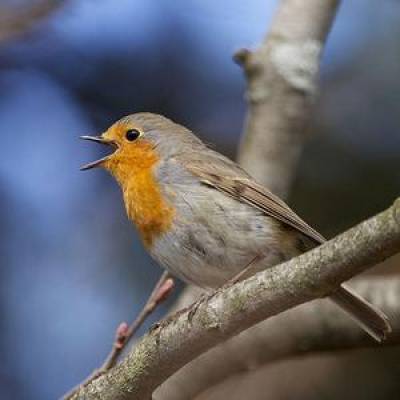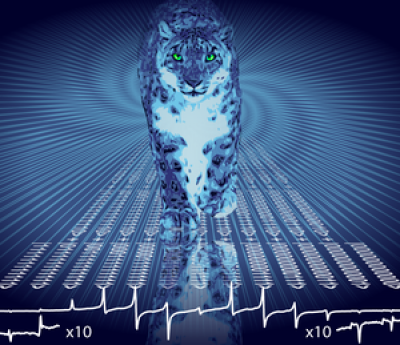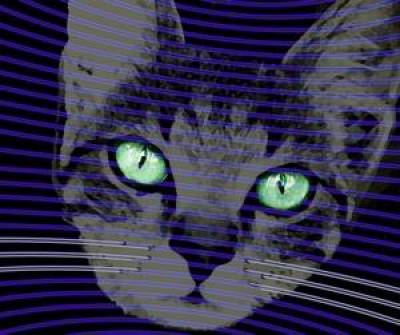Bird's eyes are quantum!

How animals detect Earth's magnetic field has been a long standing mystery. In the case of the European Robins, the evidence now suggests that these birds are capable of harnessing quantum mechanics at a level that is beyond the best man-made systems. According to recent experimental results from Frankfurt the bird's chemical compass, thought to be located on the retina, is disrupted by extremely small levels of magnetic 'noise', i.e. a tiny oscillating magnetic field added artificially to the static geomagnetic field. While the radio frequency field does not hurt the bird, it completely disables their internal compass, and the compass sense only returns after the noise is switched off. A thorough theoretical analysis based on these results shows that the bird's compass must be using a coherent quantum states for sensing the field. It seems that the bird's compass can sustain these states for at least 100 microseconds if not much longer. This may sound like a short time, but the best comparable artificial molecules only achieve 80 microseconds at room temperature in ideal laboratory conditions. (Image of singing Robin © Ernst Vikne and reproduced under the terms of the Creative Commons Attribution-Share Alike 2.0 Generic license.)
Sustained Quantum Coherence and Entanglement in the Avian Compass
Erik M. Gauger, Elisabeth Rieper, John J. L. Morton, Simon C. Benjamin & Vlatko Vedral
Physical Review Letters 106 040503 (2011) Link
Large, sensitive cats for entanglement-enhanced magnetometry

Entangled quantum states are the key to super-classical quantum computer speedups, quantum teleportation and super-classical sensors. Certain entangled states (such as those known as Schrödinger Cat-, GHZ-, or NOON states) are capable of measuring environmental variables beyond the classical limit of sensitivity, known as the Standard Quantum Limit. We have used magnetic resonance to create and control large 13-spin pseudo-entangled 'cat' states to measure the local magnetic field. We have made these sensors more robust against errors and developed techniques to prepare the initial state of the sensor to make the most of the limited amount of spin polarisation available at room temperature. With the latter technique, the most sensitive parts of the sensor acquire up to a 60-fold boost in signal.
Magnetic field sensors using 13-spin cat states
S Simmons, JA Jones, SD Karlen, A Ardavan, JJL Morton
Phys Rev A in press (2010) Link
Schrödinger's cat o' nine tails whips sensors into shape

Quantum entangled states can be very delicate and easily perturbed by their external environment. This sensitivity can be harnessed in measurement technology to create a quantum sensor with a capability of outperforming conventional devices at a fundamental level. We compare the magnetic field sensitivity of a classical (unentangled) system with that of a 10-qubit entangled state, realised by nuclei in a highly symmetric molecule. We observe a 9.4-fold quantum enhancement in the sensitivity to an applied field for the entangled system and show that this spin-based approach can scale favorably compared to approaches where qubit loss is prevalent. This result demonstrates a method for practical quantum field sensing technology.
Magnetic field sensing beyond the standard quantum limit using 10-spin NOON states
JA Jones, SD Karlen, J Fitzsimons, A Ardavan, SC Benjamin, GAD Briggs and JJL Morton,
Science 324 1166 (2009) Link
Ensemble based quantum metrology
M Schaffry, EM Gauger, JJL Morton, J Fitzsimons, SC Benjamin, BW Lovett,
arXiv:1007.2491 (2010) Link
 Close
Close

